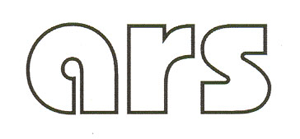Resumo em Português:
Antiga aluna da Escola do Louvre, Agnès Varda inicia sua carreira como fotógrafa, antes de se dedicar ao cinema. Raramente críticos e acadêmicos percebem ou destacam, em sua obra fílmica, o gosto acentuado e erudito pela pintura e pela fotografia, que se manifesta notadamente através da recorrência de gestos presentes na imagem. Analisaremos três procedimentos em que essa recorrência explícita pode ser percebida em alguns de seus filmes. Primeiramente, ao partir de uma imagem pictórica para reproduzir um gesto singular que se fixa pelo exercício da pausa (pose), colocando "em abismo" a relação pintura/cinema. Um segundo procedimento explora um gesto engendrado por uma fotografia em filmes cujos personagens encontram-se, em algum momento, congelados em seus gestos. Um terceiro procedimento evoca um prolongamento dos gestos, desta vez operado no seio da própria imagem cinematográfica, pela montagem. A recorrência dos gestos, tão presente na obra de Agnès Varda, encontra fortes ecos no pensamento de Gaston Bacherlard, Roland Barthes, Walter Benjamin e Aby Warburg. Assim, o que denominamos aqui uma "memória dos gestos" atesta, em seus filmes, uma fina conivência entre pintura, fotografia e cinema.
Resumo em Inglês:
Former student at the Louvre, Agnès Varda began her career as a photographer before turning to cinema. Critics and scholars rarely see or stand, in her films, the sharp and erudite taste for painting and photography, which manifests itself mainly by recurrent gestures on image. In this article, we are going to analyse three procedures by which that explicit recurrence can be seen in some of her films. First, by obtaining through a pictorial image the reproduction of a singular gesture that is fixed due to the use of pause (pose), proposing a 'mise en abyme' of the relationship between painting and film. A second procedure explores the gesture generated by a photograph, in films whose characters, frozen in their gestures, become themselves objects. A third procedure evokes an extension of certain gestures, but this time within the very filmic images, through montage. That recurrence of gestures finds strong echoes in the writings of Gaston Bacherlard, Roland Barthes, Walter Benjamin and Aby Warburg. Therefore, what we call here a "memory of gestures" attests, in her films, a fine collusion between painting, photography and film.
